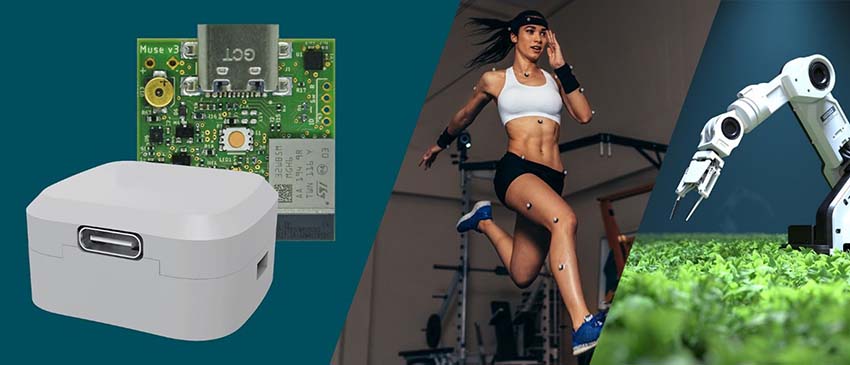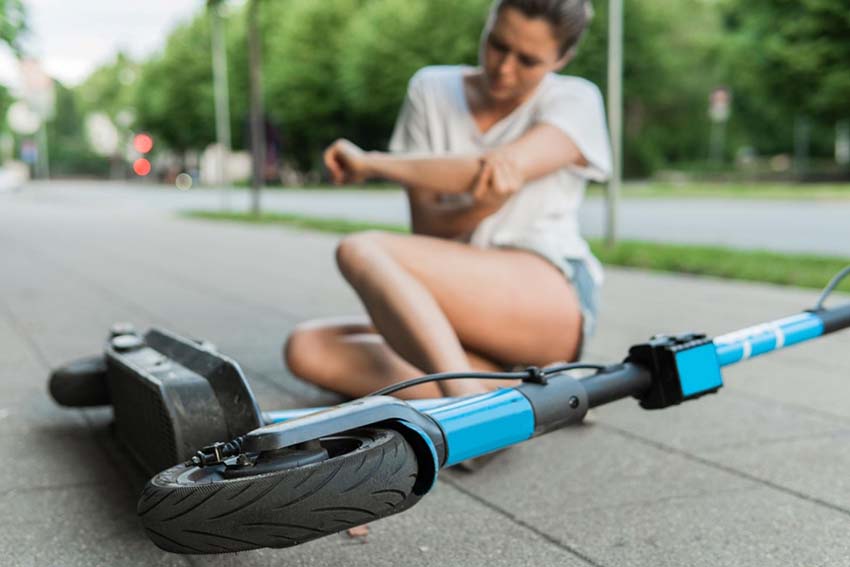221e is a deep-tech company converging sensing and AI to create intelligent precision sensing solutions for smart devices. Their AI-powered IMUs and sensor fusion algorithms provide exceptional accuracy alongside significant cost advantages.
For over a decade of field testing and scientific research, 221e’s advanced sensing technologies have been continuously refined to meet the accuracy requirements of the most demanding applications.
Using these solutions does not require our customers to have sensing or AI know-how. Their renowned interdisciplinary support team helps them to gain real value right away following a plug-and-play installation.
Interview with Eran Belaish, CMO at 221e.
Easy Engineering: What are the main areas of activity of the company?
Eran Belaish: Digitizing Physical Products With AI
Since 2012, our technology has powered product innovation in diverse markets, including wearables, sports equipment, health, industrial IoT, e-mobility, automotive, robotics, and smart PPE.
Consider applications for motion dynamics where we can monitor vehicle conditions, digital fitness where your workout tools provide you with metrics on your performance, technique and physique or navigation in robotics where a robot can sense its surroundings and operate autonomously… to get to this level, you need sensing AI technology from 221e.
Sensing AI is the merging of sensors, embedded systems and machine learning to create smart things, in both the industrial IoT and Wearable markets.
Unlocking the Value of Sensor Data
Our products can enhance any device that would benefit from a smart sensor. For devices that use multiple sensors, we’ve also developed advanced sensor fusion software that unlocks value-added features while improving accuracy.
Delivering AI for the Smart Edge
We’ve always aimed to create groundbreaking innovation that is lean enough to fit on the device itself. This approach helps our customers avoid the downsides of using the cloud – surging costs, privacy issues, high latency, and network dependence.
Our edge AI software makes devices smarter with techniques like tiny machine learning (tinyML) to enable event detection, pattern recognition, and context awareness.
E.E: What’s the news about new products/services?
E.B: NeuraSense™ is our latest edge AI solution. It is a set of intelligent sensing libraries for consumer, automotive and industrial applications. Optimized for the edge, it provides real-time inertial sensor data analysis that can add immense value to customer products even without the cloud.
NeuraSense’s contextualized data can unlock business benefits through domain-specific solutions such as anomaly detection, predictive analytics and decision automation.
E.E: What are the ranges of products/services?
E.B: Hardware – Miniature Multi-sensor IMUs
Muse™ is our flagship wireless IMU renowned for its exceptional build quality, delivering premium performance at an affordable price tag.

Software – Sensor Fusion AI
The MPE™ Motion Processing Engine and NeuraSense mentioned above encapsulate the whole range of software solutions for sensing AI. MPE is a 6/9-axis sensor fusion software providing real-time 3D orientation estimation with exceptional accuracy. On top of that, NeuraSense creates a layer of embedded AI to enable deeper insights and better accuracy.
Custom Product Partnership
MakeSense™ is a co-development program for companies that need help with implementing wireless connectivity and inertial, environmental or biosignal sensing.
We created MakeSense after realizing that it takes more than just efficient hardware and software to build innovative products. It requires unique expertise in synchronizing multi-sensor data and extracting valuable information using advanced sensor fusion algorithms and AI.
221e has the knowledge, the technology and the creativity to create custom sensing products that leave other tech companies scratching their heads. What makes 221e different is the depth of skill in intelligent precision sensing:
- Algorithms
- Physics
- Mechatronics
- Biomechanics
- Software & AI
- Electronics
- Sensors
- Integration
The MakeSense program provides a comprehensive development flow from initial concept, through design and engineering to manufacturing:
- Expert consulting
- Superb engineering
- Efficient manufacturing
- Supply chain management
E.E: What is the state of the market where you are currently active?
E.B: Everybody today wants in on AI. Even more traditional businesses, like many of our customers, realize that unless they join the revolution they won’t survive.
But when they try to add embedded AI to a physical device, it typically looks like this:

Whether it’s a consumer product, an automotive application or industrial IoT, the concept remains the same.
They use machine learning with gigantic data sets, dozens of engineers, cloud servers, blood, sweat and tears. And…
Nothing.
Their AI implementation often turns out to be inaccurate and inconsistent, full of misdetections and false alarms.
In truth, making good AI-powered products can be hard.
But there’s another option: expert-guided machine learning.
It uses carefully selected small data from the actual sensors instead of generic big data. And it also employs supervised machine learning guided by subject-matter experts.
This approach minimizes false alarms and misdetection while providing consistent accuracy as it relies on data captured from the actual device, simulating real-life conditions.
E.E: What can you tell us about market trends?
E.B: AI is considered the holy grail of product innovation in almost every market we’re active in, many of them grow with a double-digit CAGR. But, as mentioned above, productization of most AI projects fail.
To bridge this gap, companies with existing R&D infrastructure try to establish in-house AI expertise. They develop what they can and might buy the more complex technology from us.
However, many traditional businesses, including some very well-known brands, completely lack the required skills to pull it off. Such cases are classic for our MakeSense program. It allows customers to focus on their end product as we take care of the underlying technology.
Smart helmets for e-scooters are a good example of this trend. The booming e-mobility market is facing an adoption barrier, with incidents up 40% in 2023. As a result, helmets are becoming mandatory to comply with regulations and enhance safety, both of which can greatly benefit from AI. However, many helmet makers are unable to integrate such advanced technology, which can unlock game-changing features:
- Wear detection
- Crash/fall detection
- Break detection
- Head injury alert
- Black box capabilities
Through our MakeSense program, we can help them turn their helmet into an innovative smart helmet they can sell as a premium product.

E.E: What estimations do you have for the beginning of 2024?
E.B: We’re excited to see how 2024 unfolds. Following a 2X growth in 2023 YoY, we already have commitments well into Q1 and Q2.
In the hardware front, we are forecasted to expand sales through our new e-commerce platform.
In the software front, we are expanding into new derivatives of NeuraSense, such as NeuraDrive, focused on automotive and e-mobility.
We’re also expecting the first sales of Ginga, a wearable soccer tracker powered by AI/ML algorithms that we’ve recently launched.

